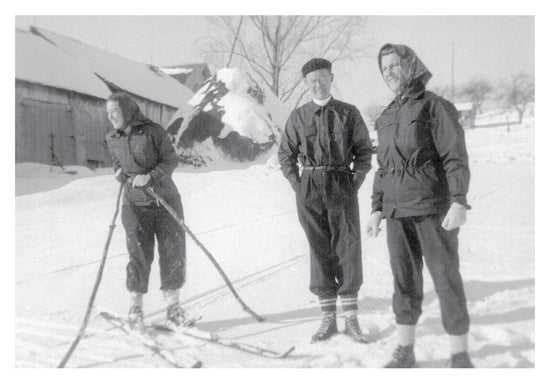Legacy: Sound Move

SKI1209
Forty and more years ago, cross-country ski touring was a loosely structured recreation, like sailing without a marina. People skied mostly on logging roads, summer hiking trails, golf courses. You only needed 210-cm wooden skis, bamboo poles, leather boots and Rottefella rat-trap bindings.
The sport grew. By the early 1960s, Rudi Mattesich, an expatriate Austrian mapmaker and former fencing master, had published a guide to Northeastern cross-country ski trails. But there weren’t yet places to rent gear, take lessons or ski on prepared tracks. Johannes von Trapp would change that.
When Baron and Baroness von Trapp and their nine children first settled in the hills above Stowe, Vt., in 1943, they brought with them a love of their native Austria’s national sport. If they weren’t singing in concerts around the world, the von Trapps skied on the fields and in the woods outside their 28-room lodge. But few guests were around to join them.
The youngest von Trapp child, Johannes, began to think of how to build up business in the winter, the lodge’s quiet season. Maybe he could attract guests and some of the skiers on nearby Mt. Mansfield to try the sport if he offered lessons, designed trails, a hut or two to relax in and a serviceman to wax skis.
In 1968 he swung into action, cutting trails. He built a lodge with a ski shop, where hot chocolate and soup were served. He hired an instructor from Norway to teach people how to pole, kick and glide correctly…for money.
Johannes opened the operation in 1969. When, after three seasons, he imposed a trail fee of one dollar, skiers protested. Nevertheless, knickered skiers flocked to the new Trapp touring center, perhaps attracted by the chance of glimpsing the Baroness, who’d become a celebrity following her
popular portrayal by Julie Andrews in the new movie The Sound of Music.
The sport soon underwent a revolution. Fiberglass replaced wood to create lighter, better-performing skis and poles. Improved bindings allowed a more efficient stride. Fitness experts praised cross-country skiing as the best of all sports for exercising arms, lungs and legs without the impact of running. Sales of nordic skis surpassed a million pairs annually.
In 1979, SKI Magazine’s Guide to Cross Country Skiing listed 450 locations. Few of the sites had existed a decade earlier when Johannes von Trapp launched the nation’s first commercial ski touring center.